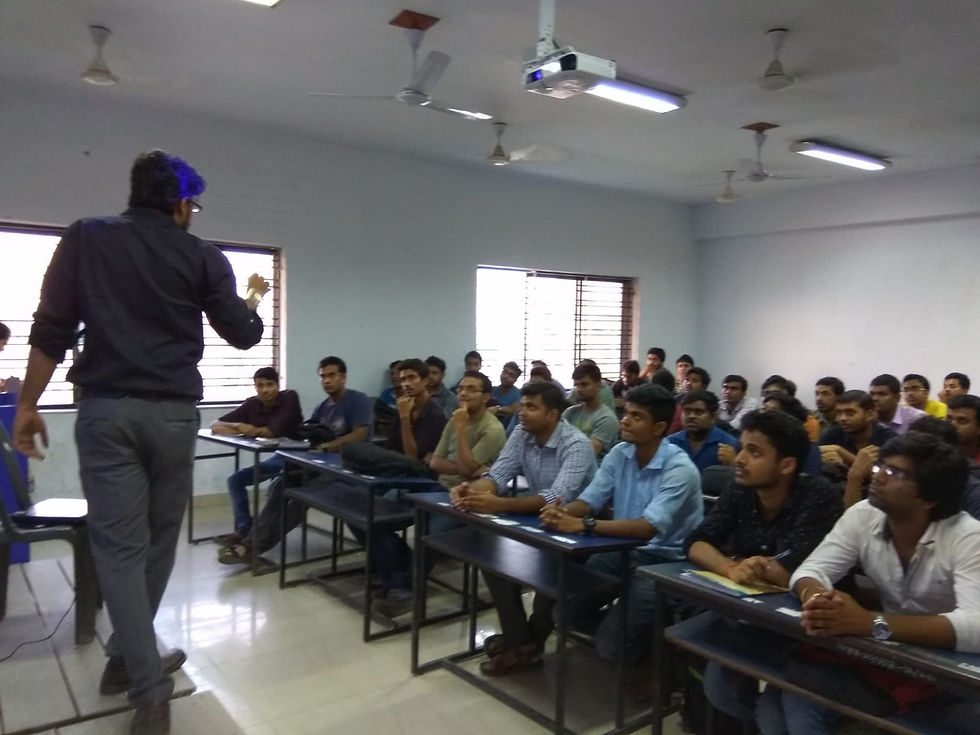Everything You Need to Know About Cambridge A-Level Mathematics 9709
- Rahul Subuddhi
- Aug 13
- 7 min read
Eve

r wondered what it’s like to decode the universe—armed not with a telescope, but with algebra, vectors, and a sprinkle of calculus? Welcome to Cambridge International A-Level Mathematics (9709), a globally respected qualification that challenges your brain in the best possible way. This isn’t just another math course—it’s your all-access pass to mastering Pure Mathematics, Mechanics, and Probability & Statistics, all woven together into one powerful syllabus.
Think of it as a mental triathlon: Pure Mathematics sharpens your abstract thinking, Mechanics teaches you how to apply math to the physical world, and Probability & Statistics help you make sense of uncertainty in data. No sweat, no running shoes—just you, your calculator, and the thrill of solving problems that actually matter.
By the end of this academic workout, you won’t just be solving equations—you’ll be thinking more logically, analyzing more precisely, and handling complex problems with a cool confidence that says, “Yep, I’ve got this.” Whether you’re aiming for university degrees in engineering, physics, economics, or computer science, or preparing for a career that values analytical thinking, the Cambridge A-Level Mathematics 9709 equips you with skills that last a lifetime.
And here’s the secret bonus: it’s also the perfect foundation for competitive exams and future-proof careers in a world that runs on data and problem-solving. In short—it’s not just math, it’s a passport to opportunities.
For a clear breakdown of the syllabus, expert study strategies, and downloadable practice resources, visit [https://www.souravsirclasses.com/]—where we turn formulas into fuel for your success. What’s in the Cambridge 9709 Math Toolbox?
The Cambridge International A-Level Mathematics 9709 syllabus is not just a collection of dry equations—it’s a well-organized intellectual workout designed to make your analytical skills sharper than a freshly sharpened pencil. Think of it as a three-part math adventure, where each domain builds a different superpower:
1. Pure Mathematics (P1, P2, P3) – The Core Superpower
If math had a heart and soul, Pure Mathematics would be it. This is where you:
Master algebra, functions, and calculus—your bread and butter for almost every mathematical challenge.
Conquer trigonometry, complex numbers, and vectors—so you can navigate not just 2D and 3D spaces, but also those sneaky imaginary ones.
Learn differential equations and mathematical modeling—because turning real-world chaos into tidy formulas is strangely satisfying.
Whether you’re plotting rocket trajectories or simply figuring out the most efficient pizza-slicing method, Pure Math is your foundation.
2. Mechanics (M1, M2) – Math in Motion
If you’ve ever looked at physics problems and thought, "This is just math with a storyline,"—you’re right. Mechanics takes your mathematical tools and applies them to the physical world:
Investigate forces, Newton’s laws, and Hooke’s Law.
Analyze motion under variable forces, circular motion, and energy transformations.
Learn to solve problems about projectiles, pulleys, and motion that would make Isaac Newton proud.
Perfect for those who want their math to have real-world weight—literally.
3. Probability & Statistics (S1, S2) – The Math of Uncertainty
Numbers aren’t just for certainty—they’re also for making sense of the unknown. Probability & Statistics will help you:
Present and interpret data with clarity.
Apply probability rules and work with binomial and normal distributions.
Master hypothesis testing and even tackle Type I & II errors like a pro.
Suddenly, statistics becomes less about boredom and more about predicting trends, risks, and possibilities—whether in science, business, or sports analytics.
Choose Your Route: Build Your Math Adventure
AS Level – Two Papers to Start Your Journey
Pure Math Only: P1 + P2
Pure Math + Mechanics: P1 + M1
Pure Math + Statistics: P1 + S1
A Level – Four Papers for the Full Challenge
Always include P1 and P3.
Then choose Mechanics (M1 + M2) or Statistics (S1 + S2).
No mixing M2 with S1/S2—Cambridge keeps it classy and organized.
In short, Cambridge A-Level Mathematics 9709 is like a customizable math buffet: you get the core skills from Pure Math and then choose your flavor—physical-world applications through Mechanics or data mastery through Statistics.
And if you’re serious about acing it, [YourSiteName.com] has:
Section-by-section study guides,
Past paper walkthroughs,
Smart exam strategies that actually work. Why Should You Even Care About Cambridge A-Level Mathematics 9709?
Let’s be honest—there are days when math problems feel like they were written by aliens. But Cambridge International A-Level Mathematics 9709 isn’t just another syllabus; it’s a confidence-building, skill-sharpening, future-proofing experience. Here’s why it matters:
1. Confidence & Critical Thinking – Your Brain, Upgraded
This syllabus trains you to turn tangled problems into clean, logical steps—even when they first look impossible. As you move through algebra, calculus, and statistics, you’ll find yourself thinking, “Wait… this actually makes sense!”
You won’t just become fluent in math—you’ll develop the ability to reason under pressure, spot patterns instantly, and see problems from multiple angles. And that kind of mental agility? Priceless, whether you’re solving equations or negotiating a business deal.
2. Transferable Skills for Life – Math That Works Outside the Exam Hall
Cambridge 9709 isn’t teaching you math just for the sake of math—it’s training you for real life. By the time you finish, you’ll be able to:
Analyze complex data (hello, future data scientist!).
Model real-world systems—from population growth to bridge mechanics.
Explain abstract concepts so clearly that even your least math-loving friend gets it.
These are the skills that universities love, employers value, and life constantly demands.
3. Exam Strategy Meets Real Strategy – Smart Is the New Hard Work
Passing this exam isn’t just about knowing the material—it’s about knowing how Cambridge asks the questions. You’ll learn:
To spot the difference between “state”, “calculate”, and “find”—yes, those command words are traps for the unwary.
To plan your solution before diving into calculations (saving you from panicked scribbling).
To avoid repeating methods or wasting time on overcomplicated approaches.
By the end, you’ll be exam-smart and math-smart. And trust me, that’s a power combo.
Wrap-Up: Where to Go Next
Whether algebra feels like your safe space, vectors give you a thrill, or statistics finally make sense, Cambridge 9709 is your mental gym membership—without the sweaty smell or overpriced protein shakes.
If you want:✅ Tutorials with just the right amount of humor (enough to keep you awake, not enough to distract you),✅ Step-by-step illustrated examples that make tricky concepts painless,✅ Downloadable past paper guides and practice questions…
Then head over to [YourSiteName.com]—where we turn “I hate math” into “I own math” one problem at a time.
Your transformation starts here.Seriously. And yes—it can be fun. Top Tips for Acing Cambridge A-Level Mathematics 9709
Cambridge International A-Level Mathematics 9709 is a challenge, but with the right approach, it can also be incredibly rewarding. From mastering Pure Mathematics to conquering Mechanics and Probability & Statistics, these tips will guide you toward success while keeping the process manageable and even enjoyable.
1. Understand the Syllabus Fully
Before diving into practice questions, take a step back and map out the syllabus. The 9709 syllabus is structured into three main domains:
Pure Mathematics: Algebra, functions, calculus, vectors, complex numbers, and more.
Mechanics: Motion, forces, Hooke’s law, circular motion, and energy.
Probability & Statistics: Data presentation, probability rules, distributions, and hypothesis testing.
Know which topics are compulsory and which are optional depending on whether you’re doing AS Level or full A Level. Keeping a checklist of topics can help you monitor progress and make your revision systematic.
2. Practice, Practice, Practice
Nothing beats consistent practice:
Past papers are your most reliable resource—they reveal question patterns, commonly tested concepts, and exam timing.
Simulate exam conditions by timing yourself. This helps you manage nerves and improves speed and accuracy.
Progress gradually: start with easier questions to build confidence, then tackle more complex, multi-step problems.
Remember, repetition builds mastery.
3. Focus on Weak Areas
Every student has topics they struggle with—maybe vectors, integration, or hypothesis testing.
Identify these weaknesses early and dedicate extra time to them.
Reinforce your strengths as well; don’t let easy topics slip just because they’re comfortable.
Remember, Mechanics and Statistics can carry significant marks, so don’t skip them even if you prefer Pure Mathematics.
4. Learn the Command Words
Cambridge exams use specific command words in questions. Understanding them can save you marks:
“Calculate”: requires a numerical answer, usually with working shown.
“Show that”: needs step-by-step derivation to reach the stated result.
“Find”: implies a final answer, sometimes with minimal steps.
“State”: often just the answer is enough, no derivation.
Recognizing these words helps you plan your approach quickly and efficiently during the exam.
5. Use Multiple Resources
Don’t rely on just one book:
Textbooks and online tutorials can provide different explanations for the same concept.
Check out YourSiteName.com for structured tutorials, illustrated examples, and practice questions.
Video lessons for complex topics like differential equations or circular motion can make abstract concepts easier to grasp.
Combine notes, solved examples, and quizzes for a rounded understanding.
6. Practice Application Problems
Mechanics and Statistics aren’t just about formulas—they’re about applying knowledge to real-world scenarios:
Solve problems related to forces, motion, and energy.
Apply probability to games, experiments, and data interpretation.
Avoid rote memorization—understand the why and how behind formulas and methods.
7. Make Formula Sheets and Diagrams
Visual aids make revision faster and more effective:
Keep a personal formula sheet for quick reference.
Draw diagrams for vectors, forces, and geometry problems to help visualize complex questions.
Diagrams also reduce calculation errors and help communicate your solution clearly in exams.
8. Revise Regularly, Don’t Cram
Consistency is key:
Spread your revision over weeks or months instead of last-minute cramming.
Revisit difficult problems regularly to reinforce memory and understanding.
Small, consistent practice sessions outperform long, infrequent study marathons.
9. Join Study Groups
Collaborative learning can be surprisingly effective:
Discuss challenging problems with peers—they might offer new approaches.
Teaching a topic to someone else reinforces your understanding and uncovers gaps in knowledge.
Sharing resources and strategies can make studying less stressful and more interactive.
10. Stay Calm and Confident on Exam Day
Finally, mindset matters:
Read each question carefully before starting; rushing leads to avoidable mistakes.
Allocate time according to marks and difficulty.
Remember, examiners award method marks—clear, logical steps often earn marks even if the final answer is tricky.
A calm, confident approach, combined with strategic preparation, is the best way to conquer Cambridge 9709. #CambridgeALevelMathematics



_edited.jpg)


































hmining hmining
hmining hmining
hmining hmining
hmining hmining
hmining hmining
hmining hmining
hmining hmining
hmining hmining
hmining hmining
rmcmining rmcmining
rmcmining rmcmining
rmcmining rmcmining
rmcmining rmcmining
rmcmining rmcmining
rmcmining rmcmining
rmcmining rmcmining
rmcmining rmcmining
hmining hmining
hmining hmining
hmining hmining
hmining hmining
hmining hmining
hmining hmining
hmining hmining
hmining hmining
hmining hmining
rmcmining rmcmining
rmcmining rmcmining
rmcmining rmcmining
rmcmining rmcmining
rmcmining rmcmining
rmcmining rmcmining
rmcmining rmcmining
rmcmining rmcmining
hmining hmining
hmining hmining
hmining hmining
hmining hmining
hmining hmining
hmining hmining
hmining hmining
hmining hmining
hmining hmining
rmcmining rmcmining
rmcmining rmcmining
rmcmining rmcmining
rmcmining rmcmining
rmcmining rmcmining
rmcmining rmcmining
rmcmining rmcmining
rmcmining rmcmining
hmining hmining
hmining hmining
hmining hmining
hmining hmining
hmining hmining
hmining hmining
hmining hmining
hmining hmining
hmining hmining
rmcmining rmcmining
rmcmining rmcmining
rmcmining rmcmining
rmcmining rmcmining
rmcmining rmcmining
rmcmining rmcmining
rmcmining rmcmining
rmcmining rmcmining
hmining hmining
hmining hmining
hmining hmining
hmining hmining
hmining hmining
hmining hmining
hmining hmining
hmining hmining
hmining hmining
rmcmining rmcmining
rmcmining rmcmining
rmcmining rmcmining
rmcmining rmcmining
rmcmining rmcmining
rmcmining rmcmining
rmcmining rmcmining
rmcmining rmcmining